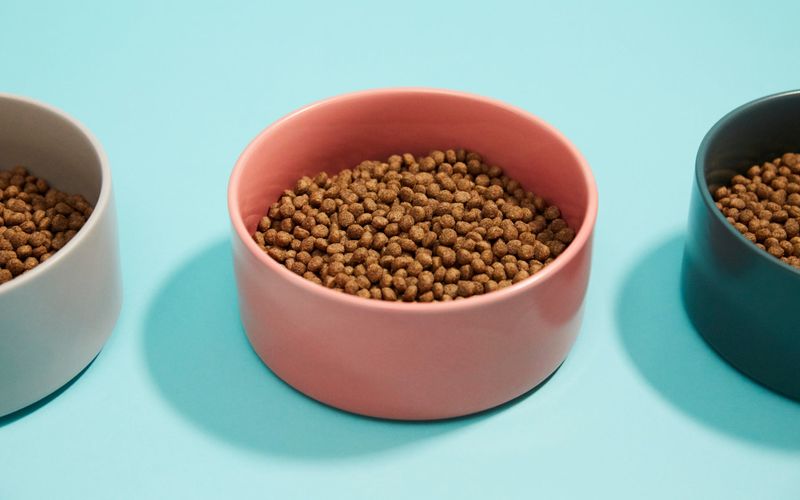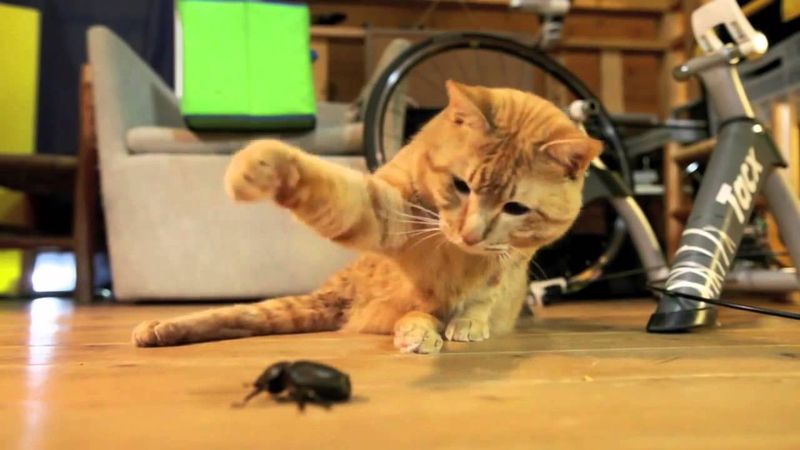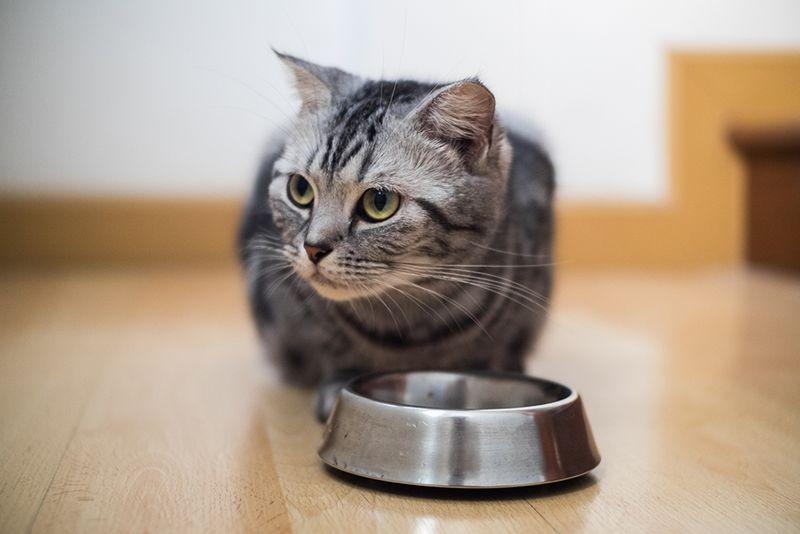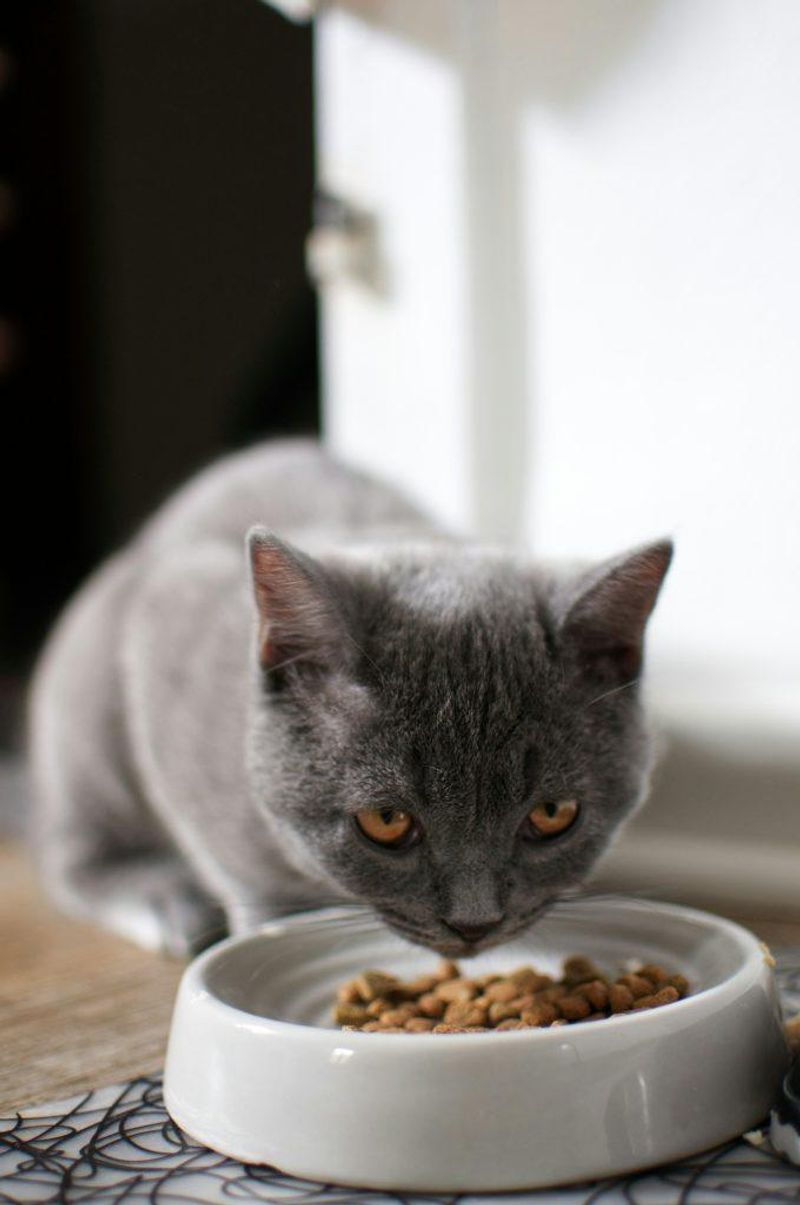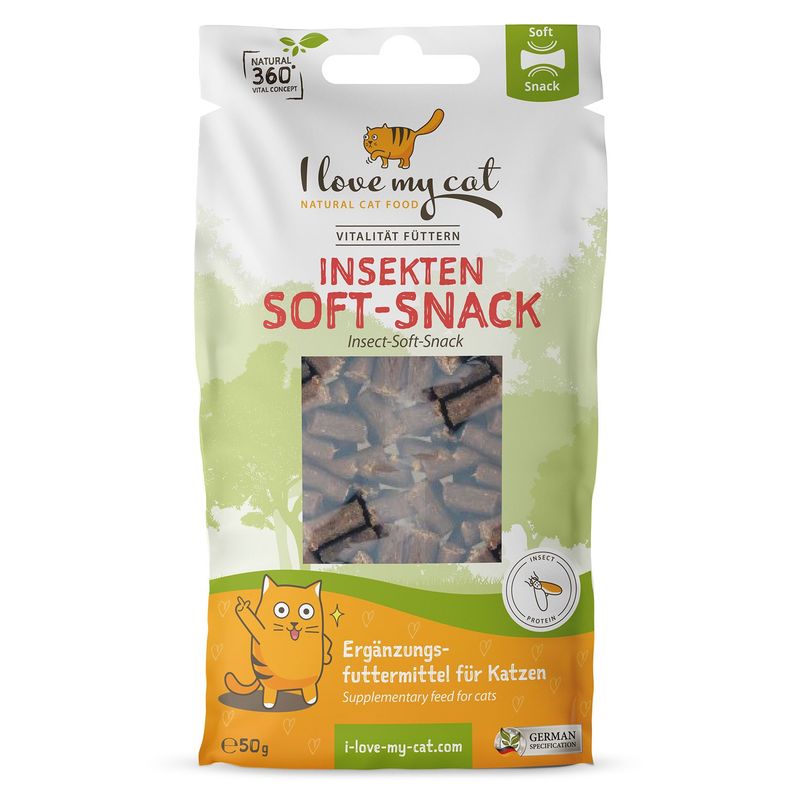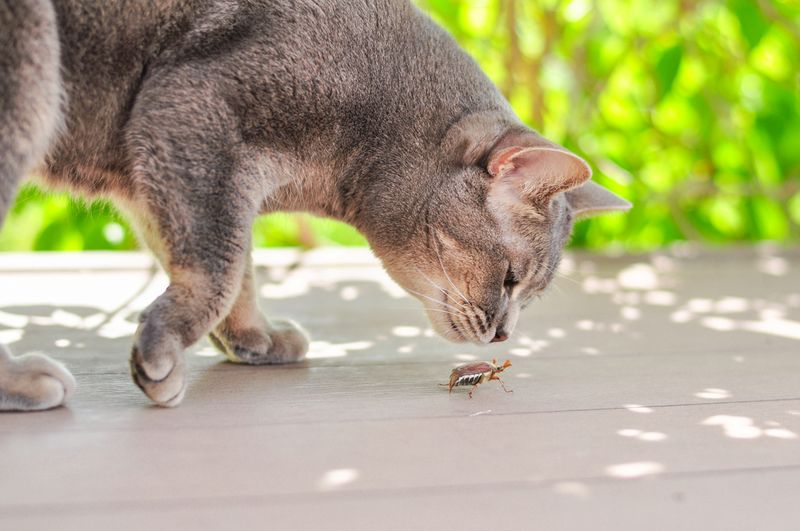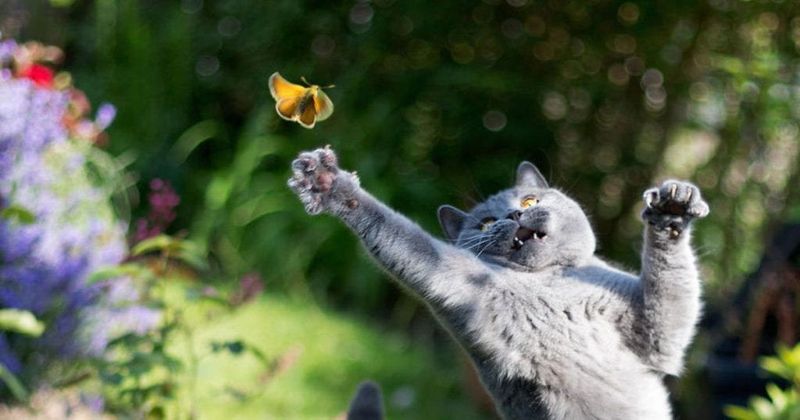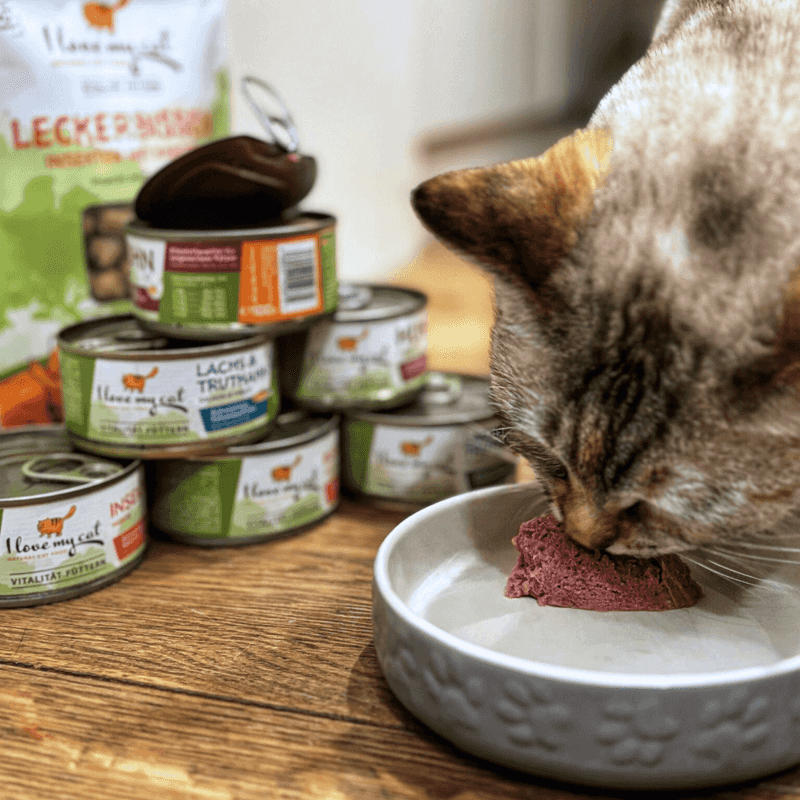📖 Table of Content:
- 1. Insects Are Surprisingly Nutritious
- 2. They’re Environmentally Friendly
- 3. Not All Insects Are Safe
- 4. It’s Still a New Market
- 5. Taste Might Be a Hurdle (At First)
- 6. Allergies Are Rare but Possible
- 7. Look for Added Nutrients
- 8. They’re Meant as Treats, Not Full Meals
- 9. Vet Approval Is Still Important
- 10. Cats Are Natural Bug Hunters
As pet parents become more conscious about sustainability, nutrition, and the environmental pawprint of their choices, a surprising new trend is crawling its way into the spotlight: insect-based snacks for cats. What once might’ve seemed like an oddity is now gaining serious traction in the pet food world—thanks to the nutritional benefits and low environmental impact of bugs like crickets, black soldier fly larvae, and mealworms.
Insects are packed with high-quality protein, amino acids, and healthy fats, making them a compelling alternative to conventional meat sources. For cats—obligate carnivores who rely heavily on animal-derived nutrients—these tiny critters could be a novel source of nutrition that aligns with both nature and science. But while the idea may sound promising, it’s important to understand the ins and outs before introducing bugs to your cat’s treat routine.
In this article, we’ll cover 10 essential things every pet owner should know before offering insect-based snacks to their feline friends. From health considerations and safety tips to taste preferences and environmental benefits, here’s everything you need to help you decide if bugs belong in your cat’s bowl.
1. Insects Are Surprisingly Nutritious
Insects like crickets, black soldier fly larvae, and mealworms are not just creepy crawlies but nutritional powerhouses. Packed with proteins, healthy fats, and essential amino acids, these bugs support your cat’s muscle development and energy needs. Imagine your cat enjoying a snack that’s as nutrient-rich as its regular diet! While it might sound unusual, the nutritional profile of insects can provide a wholesome supplement to traditional treats. These critters have been part of diets in various cultures and are now making their way into pet nutrition with promising benefits.
2. They’re Environmentally Friendly
Sustainability is one of the biggest selling points of insect-based treats. Compared to beef or chicken farming, insect farming uses significantly less water, land, and feed. It also produces drastically lower greenhouse gas emissions. In a world facing climate challenges, even small shifts in pet food sourcing can add up. Cats consume millions of tons of meat annually, and switching just their snacks to insect-based options could reduce their environmental pawprint. Because insects can be farmed vertically in controlled environments, land use is minimized. Even the food waste used to feed some insect species makes the process more circular. For eco-conscious pet owners, bugs offer both a green and guilt-free option.
3. Not All Insects Are Safe
Not every bug is fit for feline consumption. Feeding your cat wild-caught insects or ones found in the yard can introduce parasites, toxins, or pesticide residues. Only insect species raised specifically for pet food—like crickets, black soldier fly larvae, or mealworms—are considered safe and clean. Brands producing these treats follow strict food safety standards to ensure quality. Although cats may hunt bugs naturally, that doesn’t mean all insects are harmless. Some species can be toxic or indigestible to cats. If you’re buying insect-based snacks, always check for safety certifications and sourcing transparency. A little research goes a long way in keeping your cat healthy and bug-happy.
4. It’s Still a New Market
Though insects are a staple in many human diets worldwide, they’re still a novelty in Western pet food. This means the insect-based cat snack market is relatively young and evolving. Because of that, not all products are created equal. Quality can vary between brands, especially those rushing to catch the trend. Look for companies that provide complete ingredient lists, nutritional breakdowns, and third-party testing. As regulations tighten, the industry will likely become more standardized. But for now, it’s up to pet owners to be vigilant about where and how these products are made. Being an early adopter means doing your homework before diving in.
5. Taste Might Be a Hurdle (At First)
Cats are famously picky eaters, and bugs might raise some whiskers at first. Some felines will take to them right away, while others may need a gentler introduction. Consider crumbling a small amount into their regular food as a first step. The texture and smell of insects can be new and unusual to cats accustomed to fish or poultry. Brands sometimes enhance insect snacks with catnip, fish oil, or chicken broth to boost appeal. Don’t be discouraged if your cat turns up their nose initially—it might just take a few tries. Behavioral research shows that cats often warm up to new flavors through repeated exposure. Patience and experimentation can turn a skeptical sniff into a satisfied purr.
6. Allergies Are Rare but Possible
Just like with any protein source, insects can trigger food sensitivities in a small number of cats. Although uncommon, it’s wise to monitor your cat closely when introducing insect snacks for the first time. Watch for signs like vomiting, diarrhea, itchy skin, or excessive grooming. If any symptoms appear, discontinue use and consult your vet. Keep in mind that many insect-based treats are hypoallergenic, especially compared to beef or dairy. That said, cross-contamination with other ingredients is still a concern with low-quality products. Choosing a brand with transparent allergen labeling helps reduce the risk. It’s always safer to introduce new treats one at a time.
7. Look for Added Nutrients
Insect treats can be nutritionally impressive, but some may need added support. Taurine, for instance, is a vital amino acid that cats cannot produce on their own. Some insect snacks are fortified with taurine to ensure complete coverage of feline needs. Other beneficial additions include omega-3s, probiotics, and vitamins A, D, and E. Not every product contains these, so it pays to read the label. Look for “complete and balanced” claims or consult your vet if you’re unsure. Fortified treats can give your cat a tasty snack and a mini health boost. Nutrition should always come first, even when going gourmet with grubs.
8. They’re Meant as Treats, Not Full Meals
Despite their nutritional value, insect snacks are not a replacement for a complete feline diet. Cats require specific nutrient ratios that snacks alone can’t deliver. Most insect-based options are designed as toppers, treats, or supplements—not full meals. Overfeeding treats of any kind can lead to weight gain or nutritional imbalance. Ideally, treats should make up no more than 10% of your cat’s daily calories. If you’re using insect snacks frequently, factor them into your cat’s feeding plan. Always balance novelty with your cat’s overall health needs. Treats should bring joy—not throw their diet off track.
9. Vet Approval Is Still Important
Veterinarians are your best resource when considering dietary changes for your cat. If your pet has allergies, a sensitive stomach, or existing health conditions, insect snacks may or may not be appropriate. Bring the product label or ingredient list to your next vet visit. They can help assess whether the treats align with your cat’s health goals. Some vets are now more familiar with alternative proteins like insects, thanks to emerging research. You can also ask about appropriate portion sizes and introduction timelines. Don’t be afraid to get a second opinion if needed. Your cat’s long-term health is worth that extra step.
10. Cats Are Natural Bug Hunters
Anyone who’s watched their cat chase a fly or pounce on a spider knows this: bugs are irresistible to felines. In many ways, insect treats mimic a natural behavior and diet. Wild cats often consume insects as part of their foraging habits. While your house cat may not need to hunt for food, the instinct remains strong. Insect snacks can tap into that instinct in a safe, controlled way. These treats offer both mental stimulation and a protein source that feels “wild” and enriching. Don’t be surprised if your cat plays with a cricket snack before eating it. It’s nature’s enrichment tool—now in snack form.

